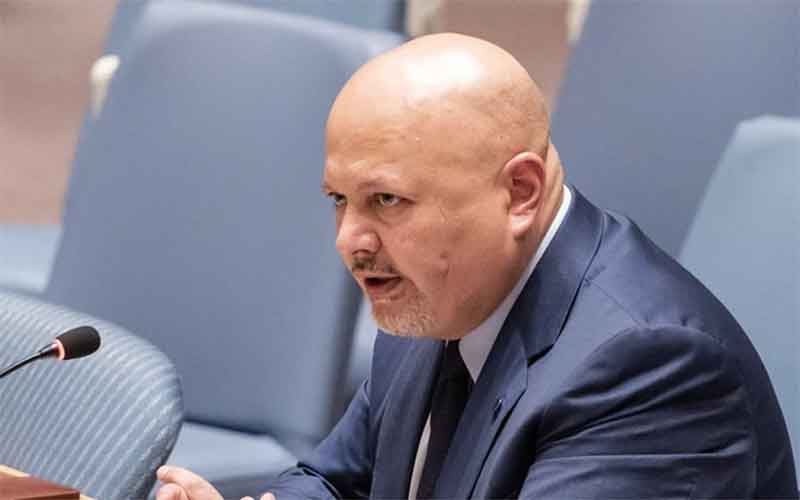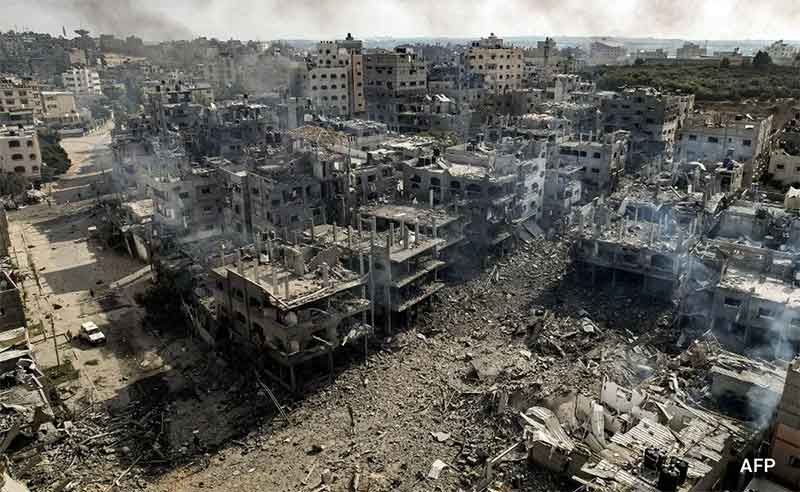
Israel has constructed tent encampments in central Gaza to warehouse Palestinians displaced by its looming assault on Rafah, according to satellite and ground-based images.
The camps are part of far-reaching plans for an assault by the Israel Defense Forces (IDF) on the southernmost city of Gaza, where more than half the population, some 1 million people, has fled for shelter.
“The [IDF] has conducted all necessary preparations to take Gaza’s southernmost city of Rafah and can launch an operation the moment it gets government approval,” reported the Times of Israel, citing a senior Israeli defense official.
The apparent acceleration of Israel’s plans to attack Rafah follows the passage of a $95 billion military funding bill by the US Congress and its enactment by President Joe Biden, which provides $26 billion to fund Israel’s genocide in Gaza and escalating war with Iran.
The preparations for the assault on Rafah come as protests against the genocide continue to spread around the world, including at a growing number of US universities, despite mass arrests and police repression.
The Israeli military said Wednesday it had mobilized two reserve brigades, by all accounts in preparation for the Rafah assault.
A spokesman for the Netanyahu government said Wednesday that the planned attack on the city was “moving ahead.”
Israeli officials held meetings in Cairo, Egypt on Wednesday to discuss plans for the offensive on Rafah, Axios reported.
The Financial Times reported that Israel had purchased 40,000 tents to shelter people displaced from Gaza. An Israeli official told the newspaper, “It’s not a secret: an operation in Rafah will happen, humanitarian enclaves will be set up, and we will move uninvolved civilians there.” He added, “It’ll take time.”
Citing Egyptian officials, the Wall Street Journal reported that “an evacuation of people in Rafah would last two to three weeks and be done in coordination with the U.S., Egypt and other Arab countries such as the United Arab Emirates.” The newspaper added, “The fighting is expected to last at least six weeks.”
In February, US Ambassador to the UN Linda Thomas-Greenfield declared that “under the current circumstances in Rafah, a military operation now in that area cannot proceed.”
The White House dialed back that language later that month, declaring that the attack “should not proceed without a credible and executable plan.”
This language was further modified this month, with a White House readout of discussions between US and Israeli officials declaring, “The two sides agreed on the shared objective to see Hamas defeated in Rafah.”
In other words, the White House has provided a green light for the invasion, with only final details needing to be worked out.
The looming invasion of Rafah comes as bodies continue to be discovered at mass graves near Gaza’s Nasser Hospital in southern Gaza.
According to Gaza’s Civil Emergency Service, 310 bodies have been discovered at the mass grave sites so far.
On Tuesday, UN Human Rights Chief Volker Türk called for international investigations into the mass graves discovered at the Nasser and Al-Shifa hospital complexes.
“Given the prevailing climate of impunity, this should include international investigators,” he added. “Hospitals are entitled to very special protection under international humanitarian law. And the intentional killing of civilians, detainees, and others who are hors de combat is a war crime.”
A spokesman for Türk said:
We feel the need to raise the alarm because clearly there have been multiple bodies discovered. Some of them had their hands tied, which of course indicates serious violations of international human rights law and international humanitarian law, and these need to be subjected to further investigations.
In a statement, the Euro-Mediterranean Human Rights Monitor (Euro-Med) joined calls for international investigations, declaring that many of the bodies discovered at the mass graves pointed to victims who were “handcuffed … who were executed.”
Euro-Med said the discoveries are “alarming, and require urgent international action, including the formation of an independent international investigation committee.” Many of the victims were subjected to “premeditated murder as well as arbitrary and extrajudicial executions while they were detained and handcuffed.”
In a statement, Erika Guevara Rosas, a senior official at Amnesty International, declared:
The harrowing discovery of these mass graves underscores the urgency of ensuring immediate access for human rights investigators, including forensic experts, to the occupied Gaza Strip to ensure that evidence is preserved.
She added:
Lack of access for human rights investigators to Gaza has hampered effective investigations into the full scale of the human rights violations and crimes under international law committed over the past six months, allowing for the documentation of just a tiny fraction of these abuses.
The death toll of the Gaza conflict reached 34,262 on Wednesday, according to Gaza’s Health Ministry, not counting the thousands who are still buried under the rubble of demolished buildings. A further 77,229 Palestinians have been wounded.
Even before the official start of the Rafah offensive, Israel continues to bomb Rafah on a daily basis. Five people were killed and several more were wounded Wednesday in an airstrike in the city.
The entire population of Gaza, meanwhile, is subjected to daily food insecurity and is bordering on famine.
In a statement Wednesday, Gian Carlo Cirri, the Geneva director of the World Food Programme, said that Gaza could face famine conditions within six weeks. “We are getting closer by the day to a famine situation,” he said.
He added that under conditions of an ongoing blockade, it is “difficult and sometimes impossible to reach affected people.” He warned that “under the current conditions, I’m afraid the situation will further deteriorate.”
Originally published in WSWS.ORG











































